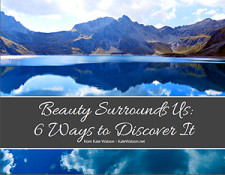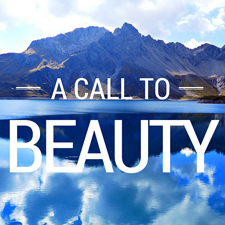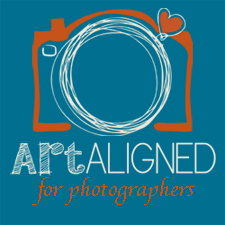Ok, my post title is a little tongue-in-cheek. I was initially surprised to see some of my message encapsulated in one of this month’s Professional Photographer magazine articles, but I think it’s wonderful that the idea of differentiating authentically is showing up elsewhere in the photography industry. Seems like the timing for this message is right on…
 When I first received my copy of Professional Photographer this month, I saw the cover slug: “How to broadcast the brand of you.” Oh no, I thought. Not another platitudinous article about how you are your brand or your brand is you. That’s such an oversimplification, and I hear it way too often. We are much too complex to be our brands, but elements of who we are do need to be incorporated into our art and business if we want to differentiate authentically. The key is figuring out how to distill all of our fabulousness into a brand, but more on that later…
When I first received my copy of Professional Photographer this month, I saw the cover slug: “How to broadcast the brand of you.” Oh no, I thought. Not another platitudinous article about how you are your brand or your brand is you. That’s such an oversimplification, and I hear it way too often. We are much too complex to be our brands, but elements of who we are do need to be incorporated into our art and business if we want to differentiate authentically. The key is figuring out how to distill all of our fabulousness into a brand, but more on that later…
I flipped through the magazine’s table of contents and saw Kimberly Wylie’s “Living the dream: Finding your personal style” right before the branding piece, and I decided to read that first.
Here are the highlights for me:
- “When you’re trying to distinguish yourself from others in a competitive landscape, being unique is a critical component of success,” she writes. Yes, exactly!
- The methodology she outlines in the article has similarities to the one I’ve been developing on my own since last fall, the Art Aligned framework. First, she suggests that you look for trends in your life, which is what I help people to do in the You and Motivations modules of my workshop. However, it was unclear how she moved from a list of personal attributes to the realization that she values “client relationships” and “telling a story with expression,” and I think people who are new to the concept would be confused as to how to do the same for themselves. I feel like people need guidance in identifying what elements of themselves are critical to their work, which is something I focus on in my workshop and 1:1 mentoring.
- Next, Kimberly asks that you look at what inspires you, which is similar to my own inspiration review assignment. Cool, huh? Because of the brevity of the piece, she can’t really delve into how much soul searching can be required to do this, but I love that she shares the idea.
- She then suggests that you trust your instincts: “Trust your own desires for your style, business and life. If you have an idea for doing something that no one else is doing, go for it! These are the ideas that make you uniquely you. It might be scarier than staying with the pack, but the benefits might be much greater.” Love it!
- She also encourages you to create a work situation that serves you. “People who can identify the common threads in their life and incorporate them into their work and business identity naturally create a happier workplace for themselves. You will see your creativity soar when you’re working in an environment that is natural to you.” Yes, and staying in the creative flow and creating a happy workplace ensures that you are serving yourself as well as your customers. It will also help keep you from burning out as I did. Good one!
Overall, I think Kimberly did an excellent job of outlining authentic differentiation, through acknowledgment of who you are and your personal motivations. Where I think she missed the mark is in not sharing how the development of a vision for your work helps to serve as a guide to your stylistic development.
Knowing who you are and what your personal motivations are feeds naturally into creating a vision for the role your work will play in the world. Clarifying your vision for yourself and elucidating it for your clients helps you and them understand where you’re coming from and what you do, and also helps you to choose appropriate stylistic elements that reflect your vision and motivations.
But, overall, I think the article is a good one. Thanks, PPA, and Kimberly!
Next, I turned to Stephanie Boozer’s “The brand of you: How to tap into and convey your unique mojo.” She started out on the right track, sharing how Nashville photographers Zach and Jody Gray decided to “capitalize on who we are” in developing their brand. Great, I thought, how do you do that? Unfortunately, the focus was brand icons, not branding.
Folks, your brand icons — logo, colors, packaging, website — are not your brand. As branding and marketing expert Maria Ross writes in her book, Branding Basics for Small Business:
Brand is the core experience, the story, and the essence of your business. It’s your company’s reputation, personality, and reason for being — all rolled into one package. Brand contains the promise you make to customers, the value your product or services provide, and the difference between you and your competition.
You convey your brand to your customers visually, verbally and experientially — through everything you say, show or do related to your business — but your message is the heart of your brand. Branding authentically means owning your own story, but unfortunately the article focuses on why several photographers chose their logo, colors or packaging.
Despite the focus on brand icons, there were still a few nuggets of wisdom to be found:
- Virginia photographer Katelyn James says, “People like consistency and relevancy, and I’m trying to offer both through my business.” I agree, consistency is key to establishing a brand that people recognize and remember.
- Part of developing your brand strategy is identifying the “interests, preferences and lifestyle of [your] ideal clients — where they’d shop, what blogs they’d read, what television shows they’d watch,” as Vancouver-based photographer Jamie Delaine suggests. Nice!
- Jamie also suggests compiling an inspiration folder, as Kimberly did. Must be something to that if we all agree, right?
So, there you have it. The PPA is copying me…or maybe the time is just right for the message of bringing your authentic self to your business and stepping away from the industry trend of commoditization. 😉
What do you think? Did you read the articles? Find anything particularly helpful or unhelpful?
Cheers,
![]()
















